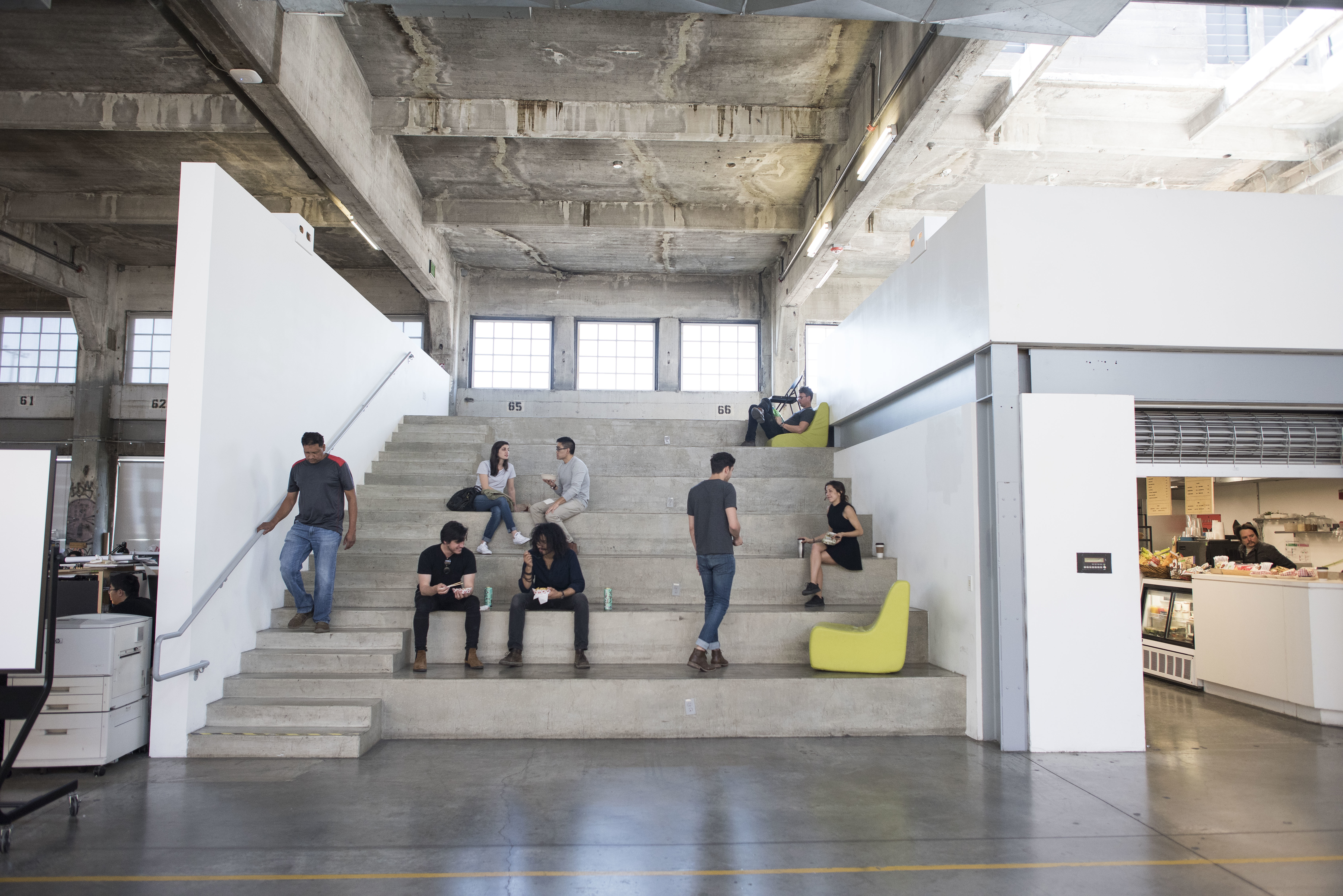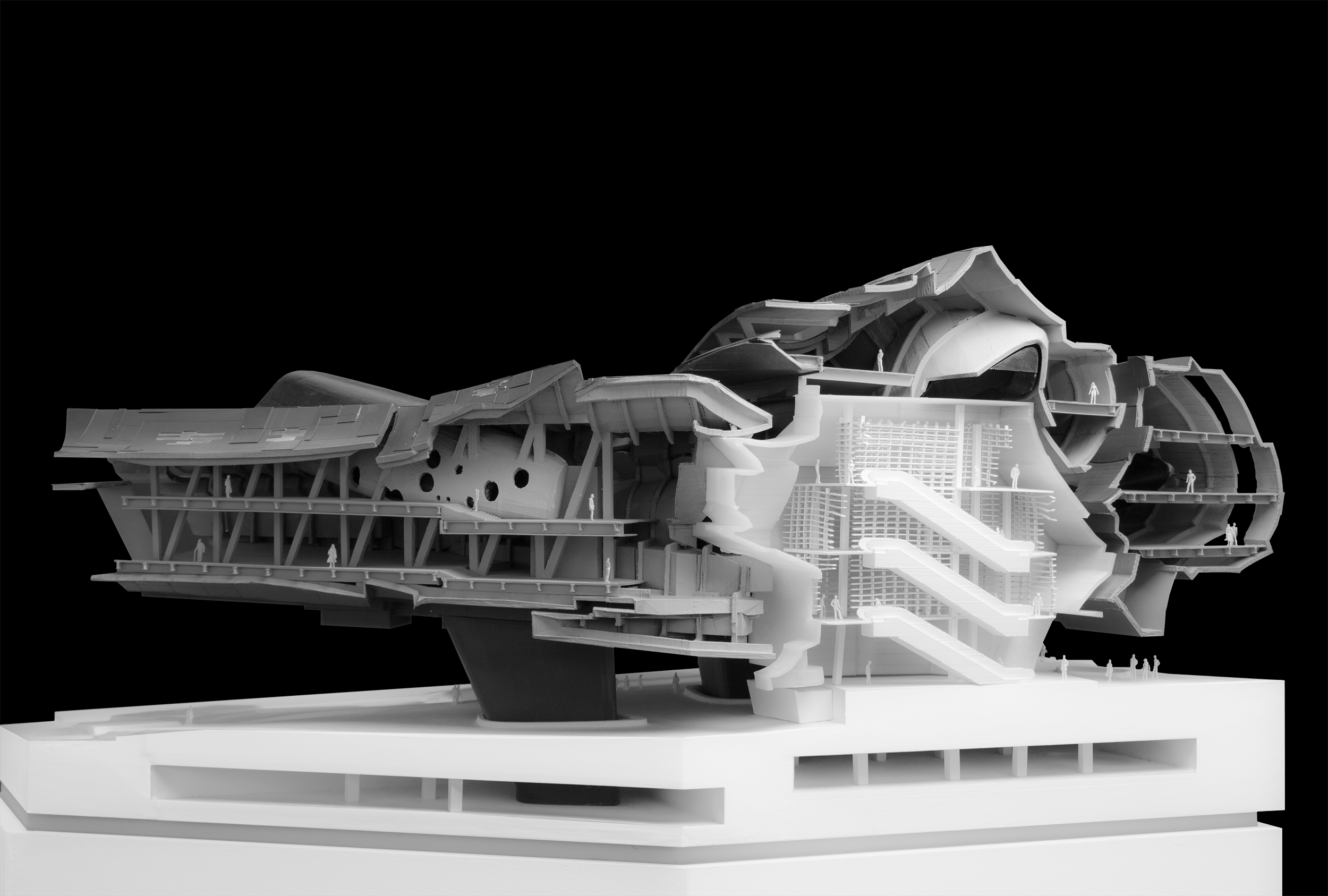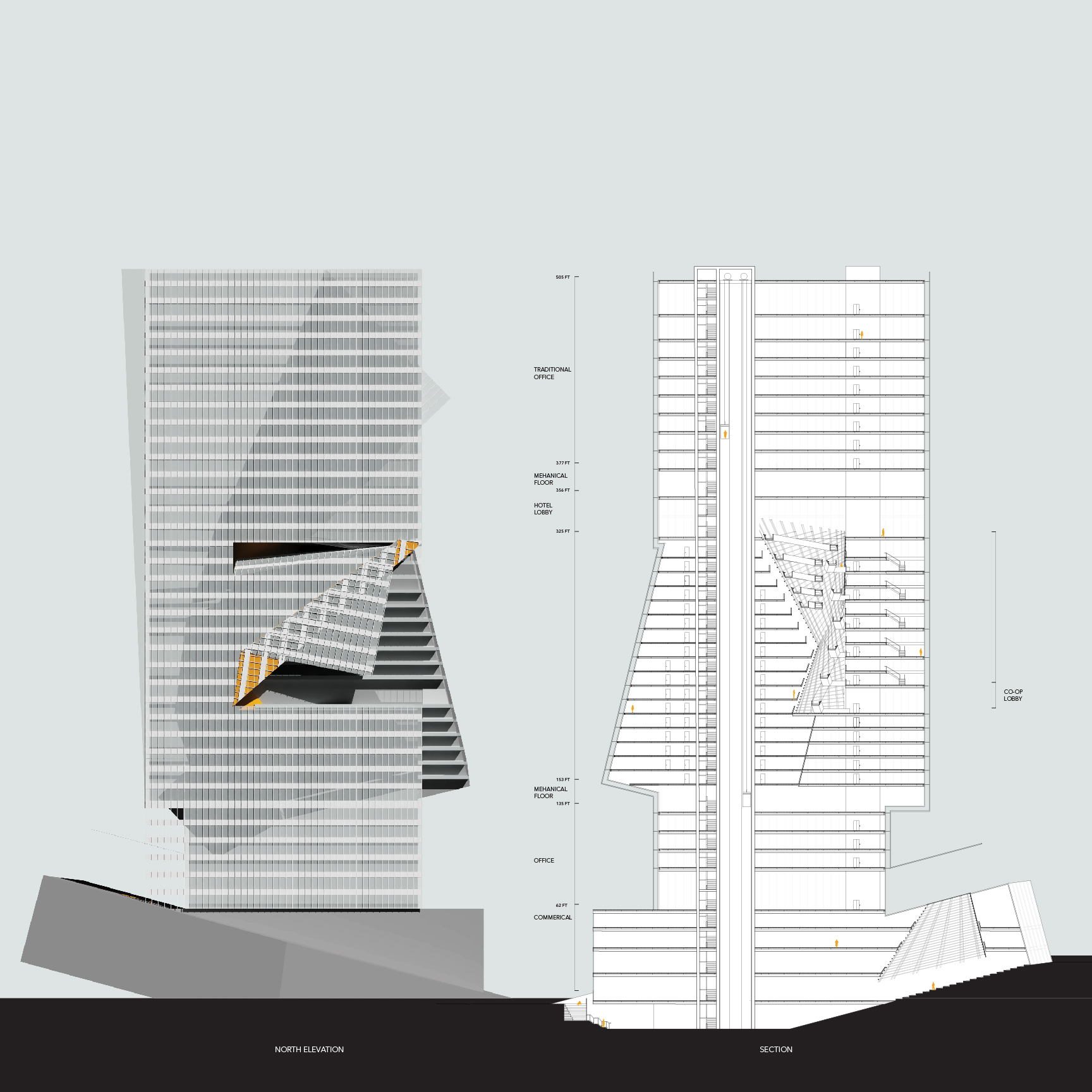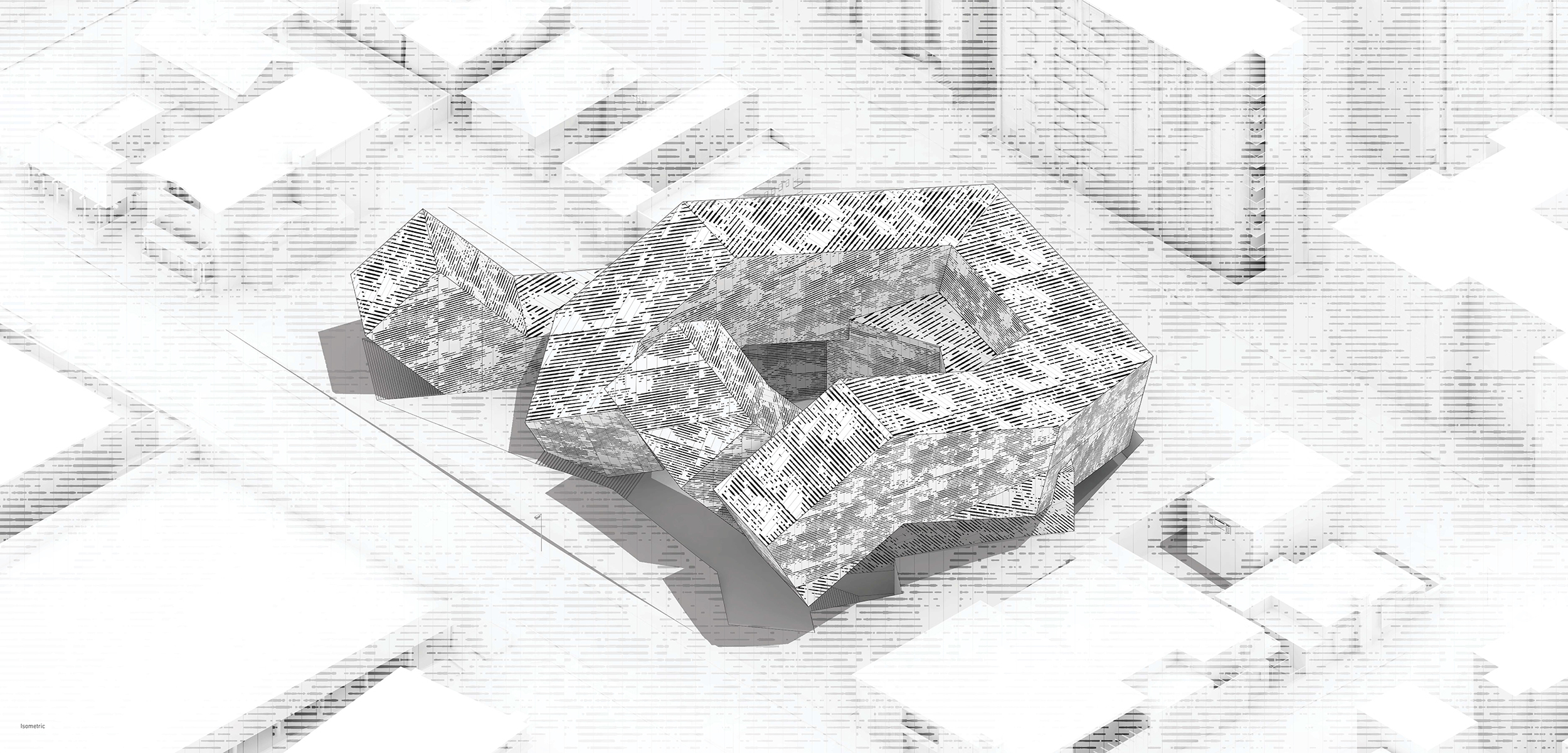SCI-Arc B.Arch Students Reflect on Their Experiences and Goals
SCI-Arc’s five-year Bachelor of Architecture (B.Arch) program focuses on the discipline of architecture—from history and theory to technologies, construction techniques, and issues related to professional practice. The core the B.Arch program is the studio, where students build design skills, test ideas, and receive continuous, personalized feedback from faculty members, many of whom are practicing architects themselves. The program also includes a range of coursework in the arts and humanities.

Five B.Arch students in their first to fourth years share their personal experiences and goals:
What are you working on now in your design studio?
COLE MASUNO (first year): My first studio has been a blast – we hit the ground running. We’ve been working in phases, each introducing a wide range of skills and ways of thinking. The first phase dealt with constructing a narrative around a collection of found objects. We learned how to scan and manipulate them by playing with their texture maps and rendering them. In the second phase we abstracted their forms and produced a series of physical massing models using museum board and wire-cut foam. For the final phase we’re exploring mass and interiority, as well as a more playful approach to how architecture can engage a broader cultural audience.
LOTTA LOCKLUND (second year): We are preparing drawings and physical models to represent our projects for an automobile research and prototyping facility. While producing presentation material for the final review there are still many aspects related to massing, programming, and other details that has to be resolved.
ANN GUTIERREZ (third year): I am designing a triplex housing development in Boyle Heights, where locals have been protesting against gentrification. Taking into consideration the economic and social issues that have led to the displacement of families, my project explores the historical transition of the hearth as a gathering space and attempts to mediate between the formal and theoretical aspects of the home and the real and contextual scenarios that surround Boyle Heights and its culture.
DUTRA BROWN (third year): In the third year the design studios focus on teaching us technical skills to back up the conceptual thinking we learned in the first two years. Right now my studio is working on tower projects, and we are responsible for understanding structure and tectonics to strengthen our designs.
ERIK RAMON VALLE (fourth year): This semester we are developing a responsive proto-thesis that takes shape as a housing project in Boyle Heights. The four-fold project requires us to identify precedents, develop an aesthetic, and understand building tectonics and composition. I’ve been looking at new methods of order in architecture, posing the question “What’s the potential of the interpretations of formal abstractions in redefining spatial organizations and creating new formal aesthetics?” I’m interested in the manipulation of the highly specific and functional, and I’ve been drawing a great deal of inspiration from Charles Moore, Aldo Rossi, and Wes Jones, as well as structures like grain silos. My project is situated on a very charged site in Boyle Heights, Mariachi Plaza, where the biggest challenge has been creating a proposal that deals with both public and private conditions. My proposed design aims to foster openness to the community by becoming an extension to the plaza while providing exclusivity for the residences.

How has your education at SCI-Arc helped you to shape your architectural point of view?
CM: I am learning SO much – my mind is constantly working. I was lucky enough to have the opportunity to spend two summers at SCI-Arc before I started my undergrad, where I attended DID and 123 Make!. Since I started the B.Arch program, it’s been exciting to explore my curiosities and how these ideas might relate to the larger conversation and architectural discourse. I’m always asking myself questions: Having an open mind is crucial. I don’t think I have the answers yet, but I’m interested in exploring architecture’s potential to be fun and eccentric, as well as the intersections across disciplines. Opening up the conversation can disrupt how we think about architecture.
LL: There are many resources provided to us—readings, lectures, in-class discussions, reviews with faculty, and talks within the studio—and I feel like I am being fed as much as I can take in, yet I am free to shape my personal viewpoint. I am letting this molding take its time so that I can merge what I carry with me from my home country together with all of the input I am receiving through schoolwork and other interactions.
AG: SCI-Arc has allowed me to experience an architectural education that blends aspects of technology, philosophy, art, urbanism, and politics. It is this exposure to multiple disciplines that has made my view of architecture a much more dynamic and open one. I think that architecture can no longer be defined in five points. The discipline has become an interwoven fabric that absorbs influences from all of its surroundings, drawing from new languages, representations, and ideas that shape the way architecture is produced.
ERV: SCI-Arc is a school of intensity. From the students to the faculty, the building is filled with great people who are at the pinnacle of the discipline. The amount of diversity the school has in thought, practice, and culture has been such a profound influence on my development as a student and an individual. There is a culture here where everyone is completely enveloped and invested in architecture in all of its connotations; there’s no telling how many conversations and debates I’ve had in and out of the walls of SCI-Arc amongst my peers and teachers. What I’ve gained here is the ability and agility to be able to take a stance and foster my own repertoire that I can define and communicate in the form of my own architecture.

What influence has learning software and other new technologies had on your ability to explore design on different levels?
LL: It’s been a steep learning curve, but it has opened up a whole other platform for creating. The more I learn, the more I realize that there will always be a quicker, neater, or fancier way that something can be done—it is a never-ending experimentation. Thankfully, there is always someone I can ask which command or plug-in to use or what settings to apply.
CM: Having the opportunity to learn these new software and technologies has opened up a number of possibilities. I'm curious to explore how different technologies can affect each other by creating feedback loops. A big part of learning these softwares and new technologies has to do with the pedagogy of the school. Teaching should be about giving people the tools, so that they can explore and push what can be done. Now that I've had exposure to these softwares and technologies, I don’t have to worry about when I’ll learn them and I can focus on experimenting and messing around. I’m excited to see how I’ll take these techniques forward later in my education and career.
ERV: The integration of technology at SCI-Arc is one of the most important factors in why it’s such a great institution—it gives the school such a nimbleness to the way architecture can be taught and manifested. We have access to incredible fabrication methods in the school’s Magic Box, metal and wood shop, and Robot Lab, as well as a wide variety of workshops and software. I’ve been exposed to so many different industries that architects never traditionally would operate within, and that truly opens your eyes to how relevant and multifaceted an architect can be.

Have you identified any new interests or professional goals during your time thus far at SCI-Arc?
LL: I’ve always been driven to understand the human mind—our habits, thoughts, culture, dreams, and the future. Urban architecture, especially, has been of interest to me, but I have come to realize that I am not limited to the real world in creating environments for people. There is a lot of room for fiction, theory, and technological experiments, especially here at this school.
AG: SCI-Arc has always pushed for a strong relationship between administration, faculty, and students. Through my involvement with the student union, I became the student trustee at the SCI-Arc board meetings, which has allowed me to engage in the executive and organizational aspects of running a school of architecture.
ERV: I’ve developed interests in scripting, coding, working with robots, and fabrication. I want to become a licensed architect, but I also want to remain on the cusp of innovation and do truly inspiring work.
CM: Right now I’m focused on learning as much as I possibly can. I’m passionate, and I truly believe that architecture can change the world. SCI-Arc has, and will always be a place where reality is pushed to its limit. Although it’s only been three months since I’ve been a student here, I already feel one step closer to my goals.
